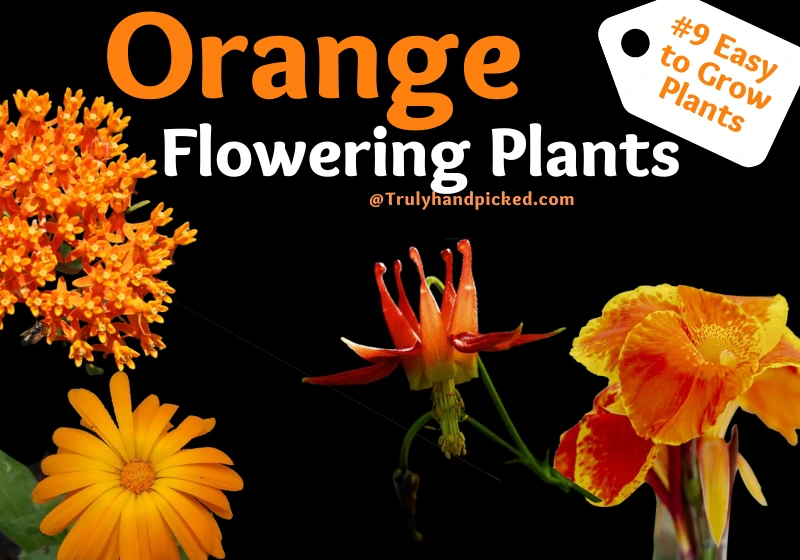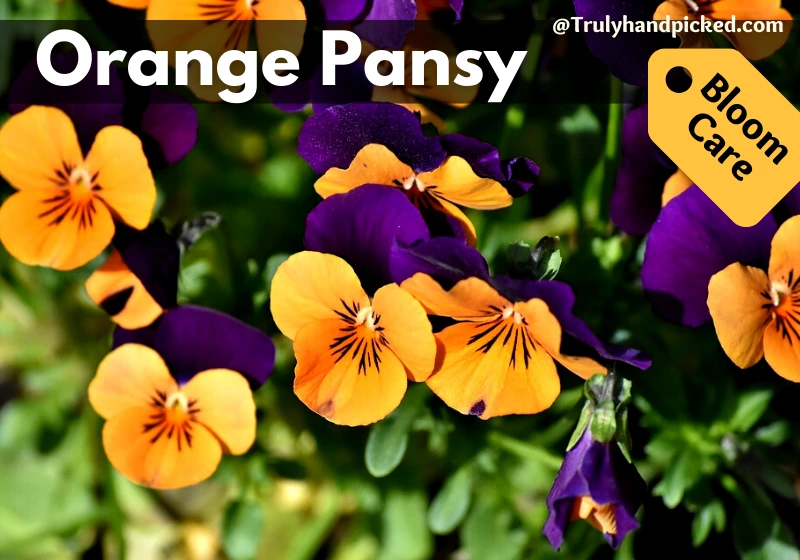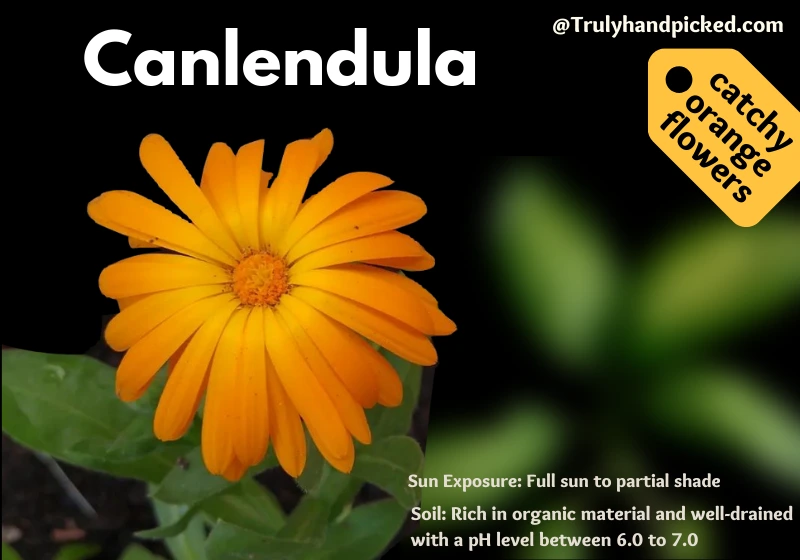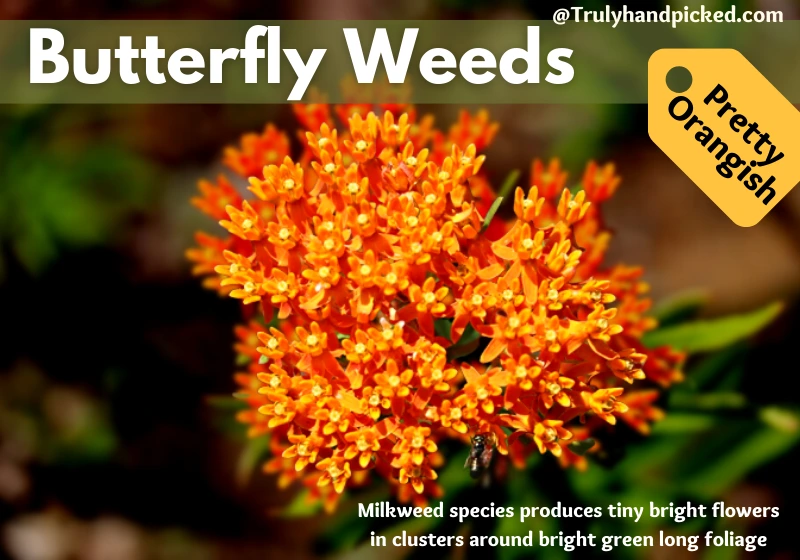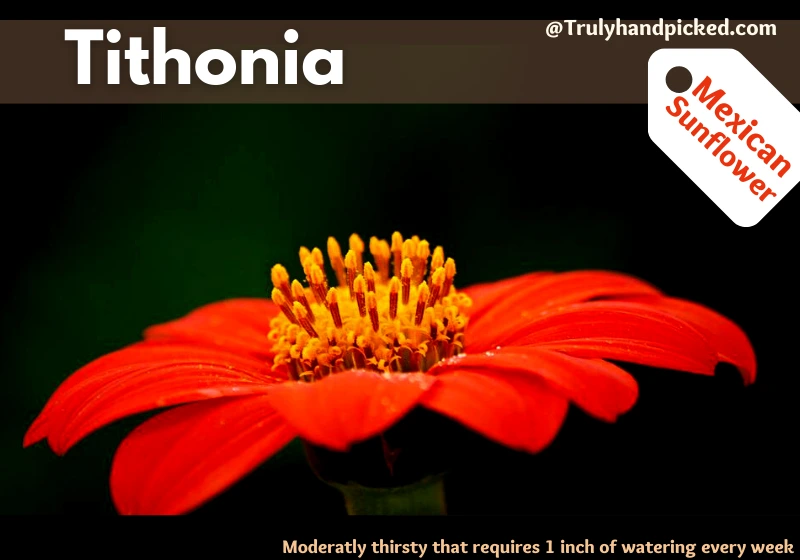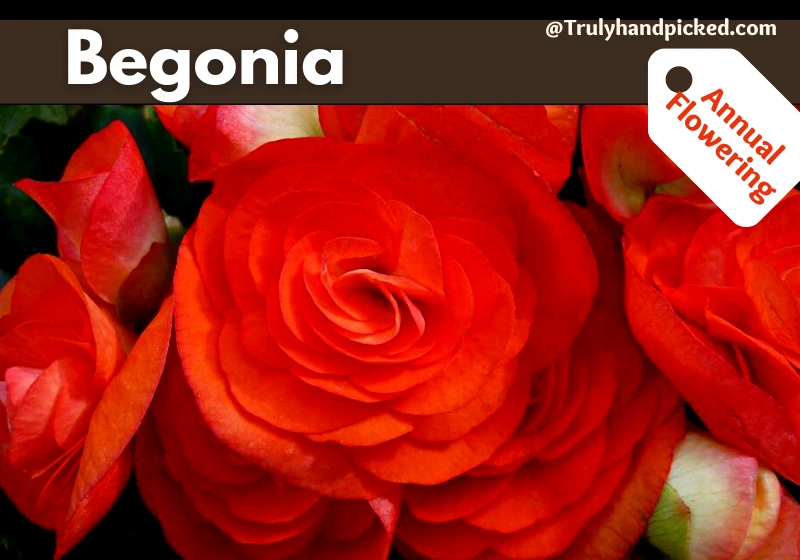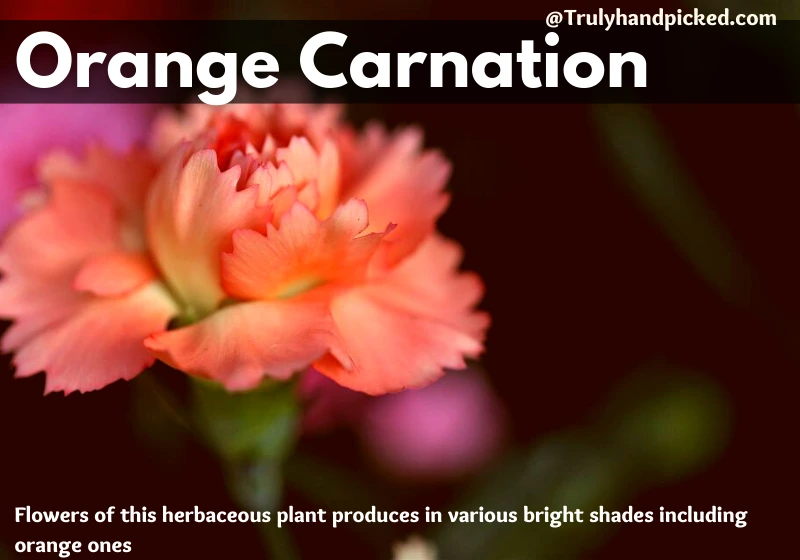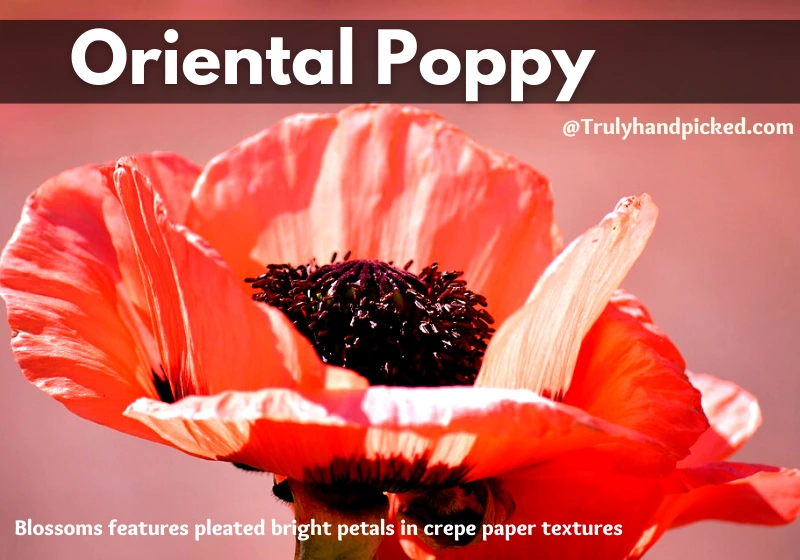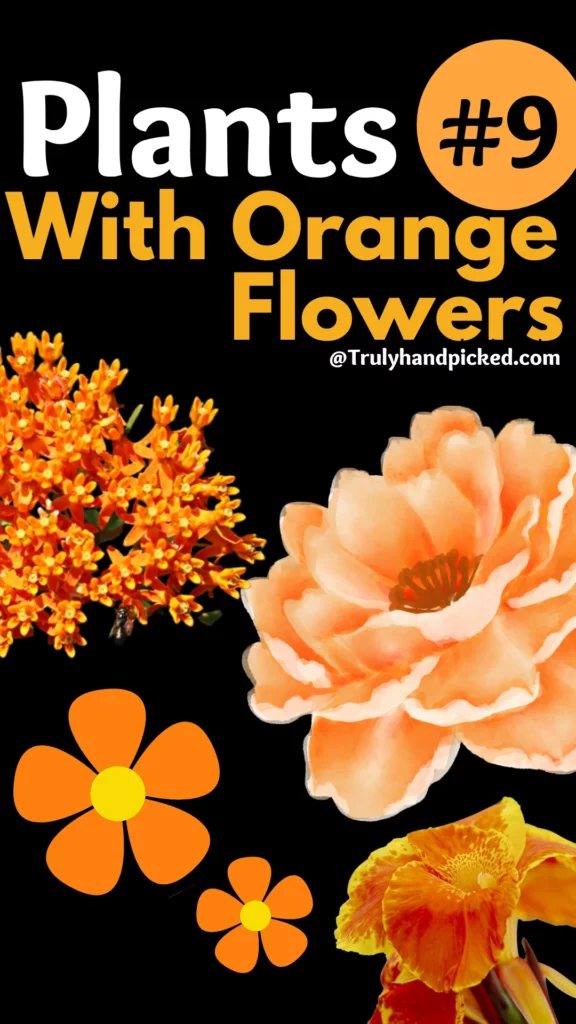Orange is a striking shade indeed, isn’t it? Bright orange color always represents zeal, warmth, joy, success, and creativity.
If you want to create a spectacular landscape view using the vibrant shade, add some orange flowering plants to your yard. They can generate an exclusive display in your garden area, especially when merged with some other bright blossoms.
Here are some best plant options we suggest, which produce beautiful orange flowers. They can easily grow in your yard with moderate growing measures. Let’s check them out and pick according to your space availability-
9 Easy to Grow Plants with Orange Flowers
Canna Lily:
The Canna lily is a beautiful and easy-to-grow plant with orange flowers. The plant can grow 5 feet tall and thus thrive best when cultivate outdoors. Flowers of this plant display like lilies in plenty of vibrant shades including orange with asymmetric petals that roll outward.
- Soil: Rich, moist, well-drained, and slightly acidic with a 6.5 pH level
- Water: Moderate water needs around 1-2 inches every 6-7 days
- Fertilization: Light fertilization with any normal fertilizer rich in phosphorous content
- Sun Exposure: Full sun
- Climate: It prefers a cold climate with moderately warm temperatures under direct sunlight
- Hardiness Zones: 7 to 10
- Blooming Time: Mid-summer to fall
Pansy:
Pansy is a beautiful plant to have in your garden for a cluster of orange flowers at once. The plant can stretch about 2-4 inches with bushy foliage along with bunches of blossoms. Flowers grow with 3-4 curvy petals and highlighted pistol parts in various vibrant shades together with orange ones.
- Soil: Rich, moist soil with a neutral pH balance that can drain very well
- Water: Moderate water needs, like 1-inch in each week
- Fertilization: Apply any completely balanced fertilizer twice a month in a 15-2-2- NPK ratio
- Sun Exposure: Full sun to partial shade
- Climate: Moderately warm temperature between 65 to 80 degrees F under bright indirect sunlight
- Hardiness Zones: 6 to 10
- Blooming Time: Mid-spring to early summer
Calendula:
Calendula is an annual perennial plant that produces catchy orange flowers over glandular stems. Leaves of this plant are sometimes borne and sometimes toothed.
The flowers grow with smooth and sleek plenty of petals in an open-to-the-sun texture. This plant is also known as potted marigold and uses for many medicinal usages.
- Soil: Rich in organic material and well-drained with a pH level between 6.0 to 7.0
- Water: 1-1½ inches of water per week with proper mulching
- Fertilization: It doesn’t need much fertilization. Try applying any balanced fertilizer in diluted form with a 16-16-8 ratio.
- Sun Exposure: Full sun to partial shade
- Climate: Bright light with warm steady temperature between 70 to 75 degrees F and moderate humidity
- Hardiness Zones: 2 to 11
- Blooming Time: May to early fall
Butterfly Weeds:
It is a wonderful flowering weed option to grow in your garden for a pretty orangish view. This milkweed species produces tiny bright flowers in clusters around bright green long foliage.
The butterfly weed plant is famous for its abundant production of nectar with an amazingly attractive glance. Plants can reach up to 36 inches tall and around 24 inches wide, while fully grown.
- Soil: Sandy loamy, and alkaline soil with well-drained quality
- Water: Plants prefer dry to medium moisture, so, water only the top surface turns totally dry
- Fertilization: It doesn’t need any fertilization to bloom
- Sun Exposure: Full sun
- Climate: Complete warm temperature and 8 hours of direct sunlight
- Hardiness Zones: 4 to 9
- Blooming Time: Early to late summer
Tithonia – Mexican Sunflower:
Mexican sunflower is another beautiful plant to grow in your yard in the search of orange flowers. This annual flowering species of sunflower grow temperately long around 4-6 feet tall with a 2-3 feet spread. Flowers grow with a large pistol part over hardy green to pinkish-brown stems.
- Soil: It can thrive in average to poor soil with acidic pH and well-drained quality
- Water: It seeks a dry to mediumly moist medium, thus, water only the top surface of the soil seems dry
- Fertilization: They do not require fertilization, however, you can try any slow-release granular fertilizer infrequently
- Sun Exposure: Full sun
- Climate: The complete warm climate up to 85 degrees F temperature with an average humidity
- Hardiness Zones: Full sun
- Blooming Time: Summer to fall
Trumpet Vine:
This is a plant with a climbing vine. Trumpet vine plants look great when you grow them near your fences or trellis. Its gorgeous trumpet shape flowers grow in bright orange to an orangish-red shade. Blossoms bloom over vining stems in the cluster. This is one of the faster-growing plants with orange flowers.
- Soil: Soil that riches in organic matter and drains well; with different types of pH levels starting from 3.8 to 7.5
- Water: A moderate thirst that requires 1 inch of watering every week
- Fertilization: Any balanced fertilizer in granulated form, only twice a year
- Sun Exposure: Full sun to partial shade
- Climate: Hot temperature with high humidity, as the plant is hardy enough to tolerate any kind of climate
- Hardiness Zones: 4 to 9
- Blooming Time: Summer
Begonia:
Begonia is a perennial flowering herb that can thrive easily in your yard with moderate care. Vividly colorful flowers bloom over succulent soft stems around deep green foliage. A healthy set of begonia plants looks amazing when blooming in rows. Plants can reach various lengths starting from 6 inches up to 3 feet, depending on the caring methods and space.
- Soil: Sandy, loamy, well-drained soil with acidic pH level around 5.5 to 6.2
- Water: Never let the soil dry ever and try watering the plant once every week for the best result
- Fertilization: Any all-purpose balanced fertilizer in diluted form during the blooming seasons
- Sun Exposure: Full sun to partial shade
- Climate: Averagely warm climate with moderate temperature around 65 to 75 degrees F with high humidity
- Hardiness Zones: 10 to 11
- Blooming Time: Summer to frost
Orange Carnation:
If you are looking for a flowering plant in a subtle orange shade, carnation is the right choice for you. A plant can grow up to 1 to 2.5 feet tall with a small spread of about 2 inches.
Flowers of this herbaceous plant produces in various bright shades including orange ones. Blossoms grow with fringe-pleated petals and with a pleasant fragrance.
- Soil: Moderately acidic, loamy, and averagely moist with well-drained quality
- Water: Water it 1-2 times a week about the top 2-3 inches layer of the topsoil
- Fertilization: The plant prefers extremely low fertilization with any balanced fertilizer in a 5-10-10 NPK ratio
- Sun Exposure: Full sun
- Climate: Moderately warm temperature in between 64 to 78 degrees F with high humidity
- Hardiness Zones: 5 to 9
- Blooming Time: Late spring
Oriental Poppy:
This perennial flowering is another great choice to grow in your outdoor garden area for vivacious orange flowers. Flowers of this plant bloom over soft stems and around greyish green foliage. Blossoms features pleated bright petals in crepe paper textures. The plant can grow up to 3 feet tall with 2 feet of spread.
- Soil: Fully fertile and mediumly moist soil with well-drained quality
- Water: Only when the top surface of the soil turns dry, that is probably once in every 7-10 days
- Fertilization: Any slow-release fertilizer once a year
- Sun Exposure: Full sun
- Climate: Moderately warm climate not less than 55 degrees F, even with high humidity
- Hardiness Zones: 3 to 7
- Blooming Time: Spring to early summer
Save to Pinterest: Orange Flowering Plants
FAQ: Plants with Orange Flowers
Q: Are marigold and Canlendula Flowers Same?
A: Calendula and marigold are often confused because they belong to the same plant family, Asteraceae, and they have similar-looking flowers. However, they are two distinct species of plants.
Calendula (Calendula officinalis) is commonly known as pot marigold, but it is not the same as the marigold (Tagetes spp.).
Calendula is an herbaceous plant that is often used for medicinal purposes and is sometimes grown for its edible flowers. Marigold, on the other hand, refers to plants of the Tagetes genus. They are often grown as ornamental plants in gardens and have larger flowers in shades of yellow, orange, and red.
Q: Smell of Pansy Flowers
A: Pansies are known for their bright and colorful flowers, but they do not typically have a strong scent. Some people describe the fragrance of pansies as slightly sweet or like violets, while others report that they do not have any noticeable scent. The lack of strong fragrance in pansies is not uncommon among plants that are bred for their ornamental value, as many of them are selected for their appearance rather than their scent.
Q: Do canna lilies come back every year?
A: Yes, canna lilies (Canna spp.) can come back every year, but this depends on several factors such as the specific variety, growing conditions, and climate. In areas with mild winters, canna lilies may survive and regrow from their underground rhizomes each spring.
Q: Butterfly Weed Blooming Time?
A: Butterfly weed (Asclepias tuberosa) typically blooms in the summer, usually from June to August in North America. The exact blooming period may vary depending on your climate and growing conditions in your location. The beautiful plant produces clusters of bright orange to yellow-orange flowers that are attractive to many species of butterflies, as well as other pollinators such as bees and hummingbirds.
Q: How long does it take Tithonias to flower?
A: Tithonia (Tithonia spp.), also known as Mexican sunflower, typically takes about 60-90 days from seed sowing to the first blooms. Once the plants are established and begin to grow, they typically start producing flower buds after about 50-60 days. The flowers will continue to appear throughout the summer and into the fall, until the first frost of the season.
Q: How long does it take for a trumpet vine to bloom?
A: The trumpet vine (Campsis radicans), also known as trumpet creeper, typically takes two to three years to bloom after it has been planted from seed or as a young plant. It needs a strong root system before it can divert enough energy to produce flowers. However, trumpet vines that are propagated by cuttings or purchased as mature plants may bloom in their first year. Additionally, it also depends on environmental factors.
Q: How long do begonia flowers last and do they come back every year?
A: Begonia flower’s lifespan can vary depending on the species and growing conditions, but typically they last from 4 to 8 weeks. Some species may bloom continuously throughout the growing season. And note begonias come back every year depending upon the species and growing conditions. Some Begonias are perennial, meaning they will come back year after year.
Q: Orange carnation color symbolization
A: Orange carnations are associated with enthusiasm, excitement, and passion. They can also symbolize creativity, warmth, and energy. In some cultures, orange carnations are given as a sign of encouragement or to convey congratulations for a job well done. Overall, the meaning of orange carnations is positive and uplifting, often associated with strong emotions and a zest for life.
Q: When do oriental poppies bloom?
A: Oriental poppies (Papaver orientale) typically bloom in late spring to early summer, usually in the months of May and June. They are known for their large and showy flowers, which come in a range of colors including red, orange, pink, and white. After blooming, the plants typically go dormant during the hot summer months.
